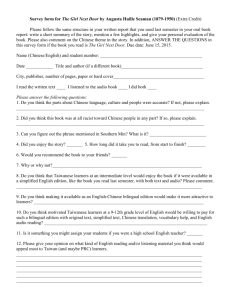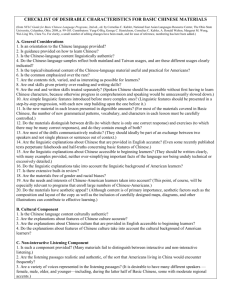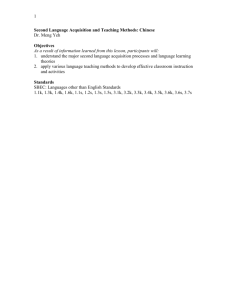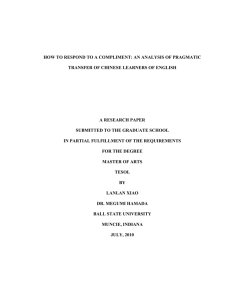RATING CHINESE LANGUAGE SAMPLES:
advertisement
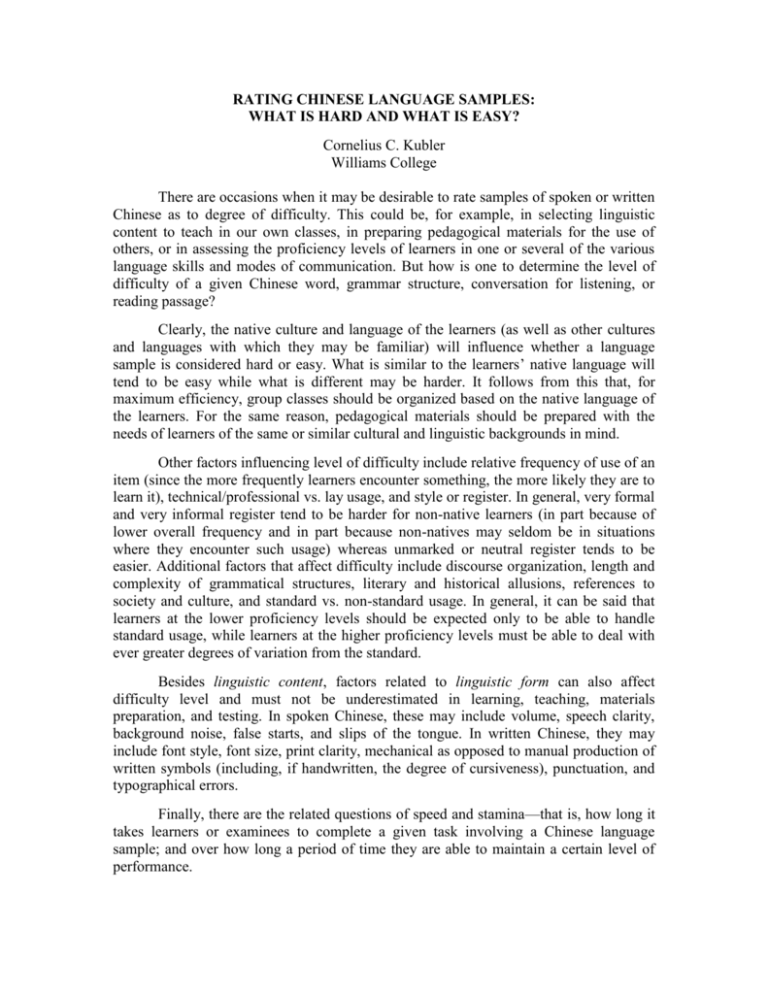
RATING CHINESE LANGUAGE SAMPLES: WHAT IS HARD AND WHAT IS EASY? Cornelius C. Kubler Williams College There are occasions when it may be desirable to rate samples of spoken or written Chinese as to degree of difficulty. This could be, for example, in selecting linguistic content to teach in our own classes, in preparing pedagogical materials for the use of others, or in assessing the proficiency levels of learners in one or several of the various language skills and modes of communication. But how is one to determine the level of difficulty of a given Chinese word, grammar structure, conversation for listening, or reading passage? Clearly, the native culture and language of the learners (as well as other cultures and languages with which they may be familiar) will influence whether a language sample is considered hard or easy. What is similar to the learners’ native language will tend to be easy while what is different may be harder. It follows from this that, for maximum efficiency, group classes should be organized based on the native language of the learners. For the same reason, pedagogical materials should be prepared with the needs of learners of the same or similar cultural and linguistic backgrounds in mind. Other factors influencing level of difficulty include relative frequency of use of an item (since the more frequently learners encounter something, the more likely they are to learn it), technical/professional vs. lay usage, and style or register. In general, very formal and very informal register tend to be harder for non-native learners (in part because of lower overall frequency and in part because non-natives may seldom be in situations where they encounter such usage) whereas unmarked or neutral register tends to be easier. Additional factors that affect difficulty include discourse organization, length and complexity of grammatical structures, literary and historical allusions, references to society and culture, and standard vs. non-standard usage. In general, it can be said that learners at the lower proficiency levels should be expected only to be able to handle standard usage, while learners at the higher proficiency levels must be able to deal with ever greater degrees of variation from the standard. Besides linguistic content, factors related to linguistic form can also affect difficulty level and must not be underestimated in learning, teaching, materials preparation, and testing. In spoken Chinese, these may include volume, speech clarity, background noise, false starts, and slips of the tongue. In written Chinese, they may include font style, font size, print clarity, mechanical as opposed to manual production of written symbols (including, if handwritten, the degree of cursiveness), punctuation, and typographical errors. Finally, there are the related questions of speed and stamina—that is, how long it takes learners or examinees to complete a given task involving a Chinese language sample; and over how long a period of time they are able to maintain a certain level of performance.



